7+ SAMPLE 5 Year Business Plan
-
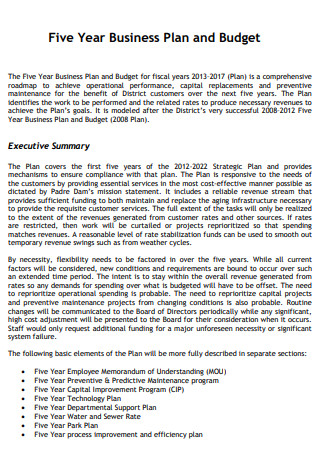
5 Year Business Budget Plan
download now -
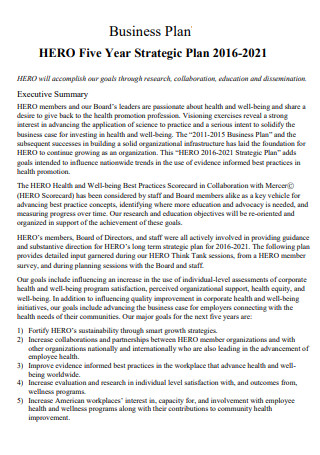
5 Year Strategic Business Plan
download now -
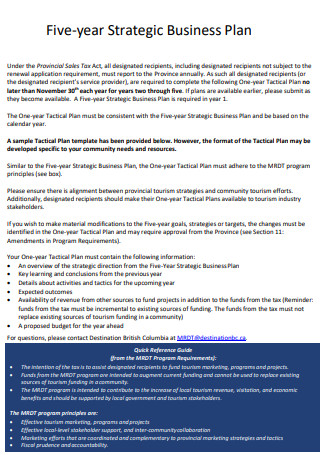
Sample 5 Year Business Plan
download now -
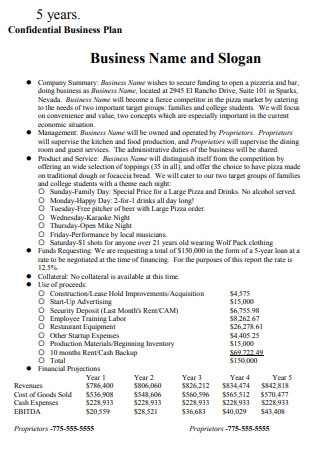
Company 5 Year Business Plan
download now -
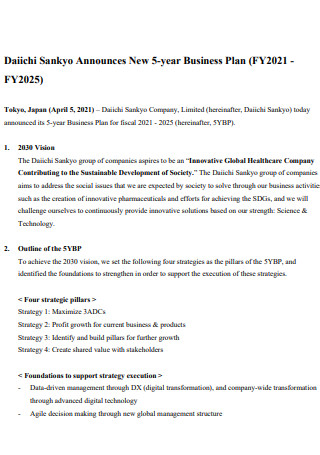
New 5 Year Business Plan
download now -
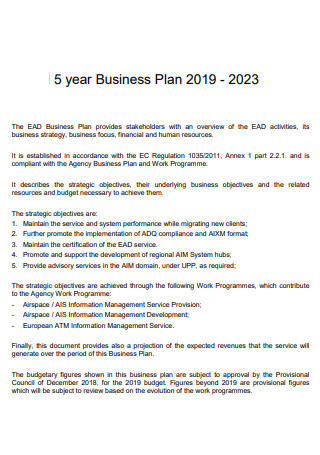
Standard 5 year Business Plan
download now -
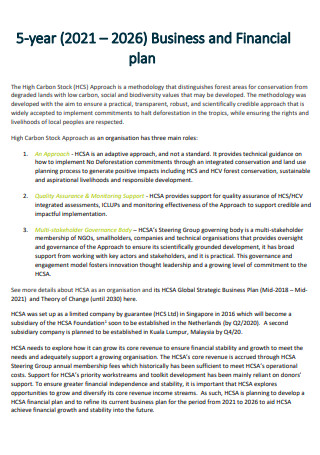
5 Year Business Financial Plan
download now -
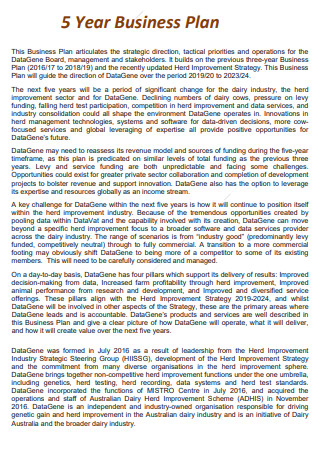
Basic 5 Year Business Plan
download now
FREE 5 Year Business Plan s to Download
7+ SAMPLE 5 Year Business Plan
What Is a 5 Year Business Plan?
Why 5 Years?
What Is the Purpose of a 5 Year Business Plan?
What Are the Benefits of Creating Your Own 5 Year Business Plan?
Tips in Developing a 5 Year Business Plan
How to Write a 5 Year Business Plan
FAQs
What is the main purpose of a 5-year plan?
What is meant by a 5- year plan?
How to design a strategic 5-year plan for the business?
What Is a 5 Year Business Plan?
A 5-Year Business Plan Template may help you create clear goals for your professional development, financial position, or personal improvement, regardless of whether you are planning your career path, professional advancement, financial position, or personal growth. A clear picture of what you need to do to achieve your vision will emerge as a result of outlining your vision in this document. A 5-year business plan is a list of personal or professional goals that you aim to achieve within a five-year time span that is typically displayed as a table of information. It is quite specific, and it outlines specific dates and smaller milestones that, when reached, will bring you closer to your long-term goal than you would have otherwise been able to. An additional benefit of creating a 5-year business plan is that it describes the talents, resources, and expertise you will need to reach your objectives.
Other templates are available on our website, and you can use them whenever you need them. They are as follows: business proposal, bidding contract, budget plan, labor contract, tap & drill charts, trailer bill of sale, employer agreement, work agreement, construction bid form, disclosure agreement, and other similar templates are available. This post will not only provide you with templates but will also provide you with important information that you need to know in order to complete your template.
Why 5 Years?
You will have enough time to “lay down the tracks” that will help you achieve the more essential accomplishments and milestones in your business without having to resort to procrastination if you use a 5-year business plan template. As you might expect, it’s far simpler to become distracted by short-term objectives that appear more urgent or provide a quicker payout. If you want to take a more difficult route, choose one that offers a longer perspective. When making this decision, you must use your imagination and have the courage to dedicate and visualize yourself living the life that you desire. For this life to become a reality, you’ll need to develop a complete strategy. Because it aids you in maintaining focus on your long-term objectives, your plan will age and evolve with you as you grow and mature. The ultimate goal of implementing plan is to see growth and improvement. It should enable you to construct the life that you want with laser-focus and intent, while also providing you with enough flexibility to adapt to who you’re becoming as time goes to meet your needs.
What Is the Purpose of a 5 Year Business Plan?
In our daily lives, we are frequently asked, “Where do you see yourself in five years?” It is possible that if someone asks you this question on the spot, you will find yourself in a position where you must try to come up with a suitable response. A personal 5-year plan template, 5-year business plan template, 5-year career plan template, 5-year plan template for life, or 5-year strategic plan template provides you an advantage over individuals who don’t think about their future objectives or ambitions in the present.
1. It Provides You With The Opportunity to Make Positive Changes in Your Life
The plan’s premise is that you can improve the nice things you already have in order to make them even better. In addition to eliminating distractions, a 5-year business plan template for life allows you the opportunity to delve deeper and identify what is important to you in life. Then you can toss out everything else that isn’t essential. The plan also provides you with the opportunity to accept responsibility for your own objectives.
2. It has a Significant Impact on Your Ability to Concentrate
The fact that a 5-year business plan template has these properties makes it extremely effective. It is a game plan that will assist you in keeping your “eyes on the prize.” It provides you with an overview of the next five years so that it does not appear to be a mystery, or worse, exactly like the routine to which you have been a slave for the previous five years.
3. It Contributes to Your Development
A personal 5-year business plan template is more than just a to-do list or a calendar of activities, which are solely concerned with short-term objectives and should be avoided. Five years is an appropriate timeframe for observing realistic and successful improvements in one’s own behavior and thinking. It can also help you achieve big advancements in both your personal and professional lives.
What Are the Benefits of Creating Your Own 5 Year Business Plan?
Choose between creating your own 5-year business plan template and using a pre-made template that is widely available on the internet. You can use this tool to gain insights into your own personality, values, aspirations, and other aspects of your character. This information can also assist potential employers in determining whether or not a prospective employee will fit well into certain company culture or job environment. More crucially, a five-year career plan template, or one that is tailored to your specific objectives, can assist you in evaluating your future plans. The following are the basic benefits that you may expect to receive if you enroll in this plan:
1. It Assists You in Discovering More About Yourself
In most cases, a 5-year plan isn’t meant to be a rigid calendar of activities that you must follow for the next five years. It is primarily about becoming more aware of oneself and developing the ability to distinguish between who you are and who you aspire to be.
2. It Aids in the Development of Long-Term Objectives
After you have uncovered your future visions and the objectives that go along with them, you can then identify the long-term goals that will be required to get you where you want to go in the future. These objectives aid in the formation of your future vision. When it comes to achieving your vision of the future, which you have formed during your process of self-discovery, long-term goals are the building blocks. These are the charts that will take you through the process of reaching your final objective one step at a time.
Tips in Developing a 5 Year Business Plan
As a reminder, in addition to what has already been stated, it is critical for you to understand the document’s purpose, the right application and implementation of the simple strategic plan, and the effective design of your procedures for document content execution. Furthermore, there are advice and principles that might assist you in becoming a better practitioner of your art. If you’re currently in the process of developing a 5-year business plan, the following are some pointers and suggestions that you can use to guide your efforts.
How to Write a 5 Year Business Plan
The benefit of having a 5-year business plan is that it not only helps your company expand but also aids in the recovery of any losses that may occur. Additionally, by entering your company’s facts in a variety of contexts, you may quickly identify and focus on areas that require improvement. A step-by-step strategy to achieving the correct balance between being imaginative and practical is provided below:
-
Step 1: Consider Your Professional Objectives and Make a List of Them
Making an assessment of your professional life and identifying the goals you wish to achieve are the first steps you should take. Consider where you want to be in five years’ time and how you can get there.
-
Step 2: Make a List of Your Abilities that Will Assist You in Achieving Your Career Objectives
You are aware of the talents, experiences, and abilities that you now hold in your current position. Make an evaluation of these characteristics and determine whether or not they can assist you in achieving your career objectives.
-
Step 3: Break Down Your Ambitions Into Smaller, More Manageable Chunks of Time
After you have gathered all of the information for your 5-year plan template, you can begin writing up your strategy. A full 5-year plan may appear to be out of reach when seen as a single entity. What you can do is break things down into smaller, more manageable chunks that are more obtainable. This allows you to understand more clearly how far you’ve come and, as a result, helps to keep you motivated as you continue.
-
Step 4: Look for Opportunities on a Regular Basis
Now that you’ve completed your strategy, you can begin looking for situations where you may earn valuable experience. Generally speaking, there are two options for accomplishing this. Look for business development opportunities within your organization. Make no apprehensions about discussing with your employer any talents that you wish to learn or develop, and seek out opportunities where you can gain relevant and specific work experience. Look for business prospects in other organizations. Perhaps it is time for you to look for other changes in different companies if you feel that you are not receiving the assistance you require or that opportunities are not available to you.
-
Step 5: Continue to Refer to Your Five-Year Strategy
If you want to be successful in reaching your objectives, you must evaluate your progress on a frequent basis. Take some time to sit down and analyze your strategy to ensure that you are on pace to meet both your Short-Term Goals and your long-term objectives. It can also be an opportunity to make changes, particularly if your professional path has taken you in unexpected directions.
It is critical for you to grasp the difference between the current and future situations of your company in order to develop a successful five-year business strategy. When putting up all of your professional objectives and action plans, you must be practical. Aspects of your presentation should include how you will deliver the content to different audiences. With the help of our samples, you can begin to construct the presentation of your five-year strategic plan for your organization.
FAQs
What is the main purpose of a 5-year plan?
The main purpose of a 5-year plan is to help individuals or businesses to come up with a framework that will help them reach their goals in the next 5 years.
What is meant by a 5- year plan?
In a five-year plan, an individual or company evaluates where they are now and where they want to be in five years.
How to design a strategic 5-year plan for the business?
Assemble your company’s mission and vision statements, decide where you want to go in five years, devise a strategy to reach your goals, and evaluate your progress every six months.
Planning is essential for any project, whether it is long-term or short-term in nature. You must envisage and prepare for a goal by assessing your present resources as well as what you will need to reach them. You must also consider how you will get there. You can use a 5-year business plan template to layout your goals and track your progress on a monthly, quarterly, semi-annual, or annual basis, regardless of whether they are personal or professional in nature.
